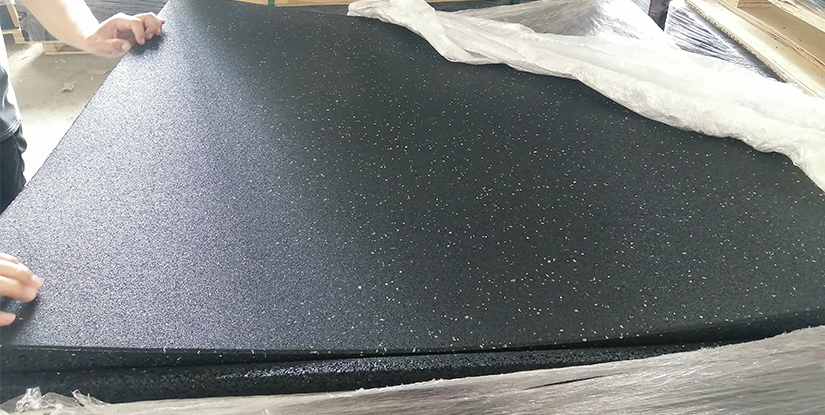Thick Workout Mat Guide: Choose the Best Extra-Thick Exercise Mat

Thick Workout Mat: Benefits, Materials, and Selection Guide
A thick workout mat delivers superior cushioning, joint protection, and stability for a wide range of training modalities — from yoga and pilates to high-impact functional training. Choosing the right thickness and material improves comfort, reduces fatigue, and helps maintain proper alignment during dynamic movement. This guide provides a concise, professional overview to help fitness professionals and informed consumers select an optimal mat for home or commercial use.
Why Thickness Matters
Thickness affects shock absorption, balance, portability, and tactile feedback. Thicker mats (10 mm and above) provide excellent cushioning for sensitive joints and floor-based rehabilitation exercises. Moderate thickness (4–8 mm) balances comfort and stability, making it ideal for yoga and general conditioning. Ultra-thin mats (1–3 mm) favor transportability and stronger ground proprioception for balance work.
Common Materials and Their Performance
- High-density EVA foam — Lightweight, durable, and cost-effective. Offers reliable shock absorption for general fitness and core work.
- Natural rubber — Exceptional grip and resilience. Biodegradable options exist, though weight can be higher.
- PVC — Affordable with good durability, but less eco-friendly. Often used for commercial-grade mats with textured surfaces.
- TPE (Thermoplastic Elastomer) — Eco-friendlier synthetic alternative with good cushioning and traction, hypoallergenic for many users.
- Closed-cell foam — Moisture-resistant and easy to clean, commonly used for thicker floor mats in home gyms.
Choosing the Right Thickness
- 1–3 mm: Travel and studio mats where portability and floor feedback are priorities.
- 4–8 mm: Versatile choice for yoga, pilates, and general fitness — blends comfort and stability.
- 10 mm and above: Ideal for therapeutic exercises, senior fitness, or high-impact activities where cushioning is essential.
Key Features to Evaluate
- Density and firmness: Higher density means better stability and durability despite increased thickness.
- Surface texture: Non-slip surfaces improve safety during dynamic movements and sweat-prone sessions.
- Size and portability: Consider length and width for exercise range; choose roll-up or foldable designs based on storage and transport needs.
- Maintenance: Closed-cell or coated surfaces resist moisture and are easier to sanitize; removable covers add convenience.
- Environmental profile: Natural rubber and recyclable TPE reduce environmental impact compared to PVC.
Use Cases and Recommended Options
- Yoga and Pilates: 4–6 mm moderate density mat for balance and joint comfort.
- Physical therapy and rehab: 10–15 mm high-density foam for maximal cushioning and joint protection.
- Home gym and bodyweight training: 6–12 mm closed-cell mats to protect floors and reduce noise.
- High-impact classes: Combine a thick mat with a rubber base or interlocking tiles for heavy drop protection.
Care and Longevity
Proper care extends mat life and maintains hygiene. Clean regularly with manufacturer-recommended cleaners or a mild soap solution. Air-dry flat or hung away from direct sunlight to prevent UV damage. Rotate usage areas to avoid uneven wear and inspect for compression or surface breakdown — replace when cushioning or grip deteriorates.
Buying Checklist
- Confirm intended use and select thickness accordingly.
- Prioritize high-density construction for heavy or frequent use.
- Test or review surface grip, especially for sweaty or barefoot activities.
- Factor in portability needs: weight, foldability, or included carry straps.
- Check warranty and return policies; commercial-grade mats often include longer coverage.
Cost vs. Value
Price correlates with material quality, density, and brand reputation. Investing in a mid- to high-range thick mat reduces replacement frequency and improves training comfort. For commercial settings or therapeutic applications, prioritize durability and safety certifications over initial cost savings.
FAQs
- How thick should a workout mat be for joint protection? 6–12 mm high-density mats are recommended for general joint protection; 10 mm+ for rehabilitation.
- Are thicker mats always better? Not always. Excess thickness can reduce balance feedback; choose based on activity type.
- Which material offers the best grip? Natural rubber and textured TPE surfaces typically deliver superior traction.
- Can thick mats be used for weights? Light free-weight work is fine, but heavy drops require dedicated flooring or thicker interlocking tiles.
- How do I clean a thick workout mat? Wipe with mild soap solution, rinse if needed, and air-dry away from direct sun.
- Are thick mats portable? Some are — look for roll-up or foldable designs and consider weight when choosing.
- Do thicker mats retain odor? Some materials like natural rubber may have an initial scent that dissipates; ventilation and cleaning help.
- What’s the lifespan of a quality thick mat? With regular care, 3–7 years depending on frequency and intensity of use.
- Is eco-friendly material durable? Yes — natural rubber and premium TPE can be both durable and more sustainable than PVC.

